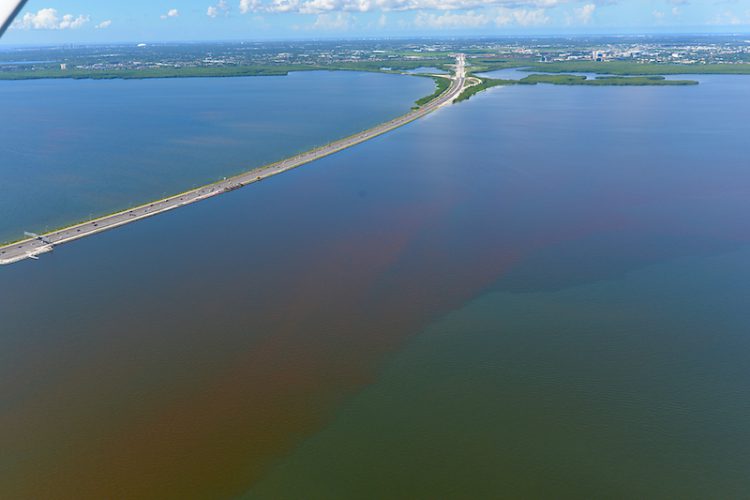Full Title: Tampa Bay restoration and Pyrodinium bahamense blooms dynamics: Filling knowledge gaps to enhance recovery
This project will guide and inform priority management options to reduce blooms of the toxic dinoflagellate, Pyrodinium bahamense, Tampa Bay.
Lead Investigators: Cary Lopez (cary.lopez@myfwc.com) and Sugandha Shankar, Florida Fish and Wildlife Conservation Commission, Fish and Wildlife Research Institute
Natural Resource Managers: Ed Sherwood, Maya Burke, Gary Raulerson, and Marcus Beck, Tampa Bay Estuary Program
Federal Program Officer/Point of Contact: Frank Parker (frank.parker@noaa.gov)
Award Amount: $103,503
Award Period: This project began in September 2021 and will end in August 2022.
Why it matters: Tampa Bay is one of the few international examples of a coastal ecosystem in recovery despite continued urbanization within its watershed. However, setbacks in recovery have been observed in the northern region called Old Tampa Bay (OTB). Setbacks have been attributed to recurring high biomass blooms of Pyrodinium bahamense, a toxic dinoflagellate. This project focuses on developing research to inform two management actions designed to control dinoflagellate growth: 1) improving tidal circulation and hydrology to increase physical transport of algal cells, and 2) restoring populations of molluscan shellfish to increase grazing rates.
What the team is doing: The Tampa Bay Estuary Program (TBEP) and the Tampa Bay Nitrogen Management Consortium (TBNMC) have begun taking proactive steps to identify additional, realistic management options that can be pursued by partners within the Bay to help achieve better water quality in the future. Research findings and products from this project will be applied as part of TBEP’s Water Quality Decision Matrix Framework to update and inform research and management activities in OTB. The TBNMC Reasonable Assurance Plan will be updated to include outcomes from this project and help guide future partner implementation activities on five-year cycles moving forward.
Expected outcome: Guidance and products will be incorporated into the 2022 and 2027 TBNMC Reasonable Assurance Plan updates scheduled to be delivered to the USEPA and FDEP, and in the TBEP’s 2027 Comprehensive Conservation and Management Plan Update.
 Official websites use.gov
A .gov website belongs to an official government organization in the United States.
Official websites use.gov
A .gov website belongs to an official government organization in the United States.
 Secure .gov websites use HTTPS
A lock or https:// means you’ve safely connected to the .gov website. Share sensitive information only on official, secure websites.
Secure .gov websites use HTTPS
A lock or https:// means you’ve safely connected to the .gov website. Share sensitive information only on official, secure websites.

